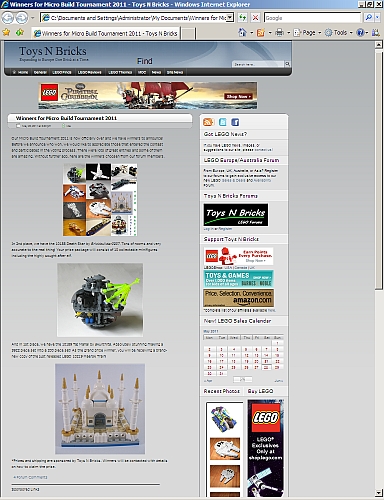A little funny for the weekend from LEGOClubTV. Watch out though; the catchy tune and fun lyrics may stuck in your head! 
Happy buildin’! 😉
A little funny for the weekend from LEGOClubTV. Watch out though; the catchy tune and fun lyrics may stuck in your head! 
Happy buildin’! 😉
Umh… ahem… cough… cough… I don’t want to be boastful, but just wanted to let you know; I won first place at the 2011 Toys-N-Bricks Micro-Build Tournament! 
(See announcement here: Winners for Micro-Build tournament 2011)

See the little Taj Mahal there? Yep, that was my entry! 😉
Thank you guys for your encouragement, votes and good wishes in this LEGO contest! Y’all are welcome to come over and help me build my brand spanking new train when I receive it! 😉
The last time I owned a LEGO train is when I was like 10 years old! And I have been wanting one ever since I have gotten out of my “dark-ages”! LOL!
Also, if you are not a member at Toys-N-Bricks, I highly recommend that you become one! It is a lovely LEGO online-community with a great forum, great info for AFOLs, great contests, and always the latest announcements on LEGO sales and deals at various retailers! So check them out!
I can’t wait to get my train! 😛